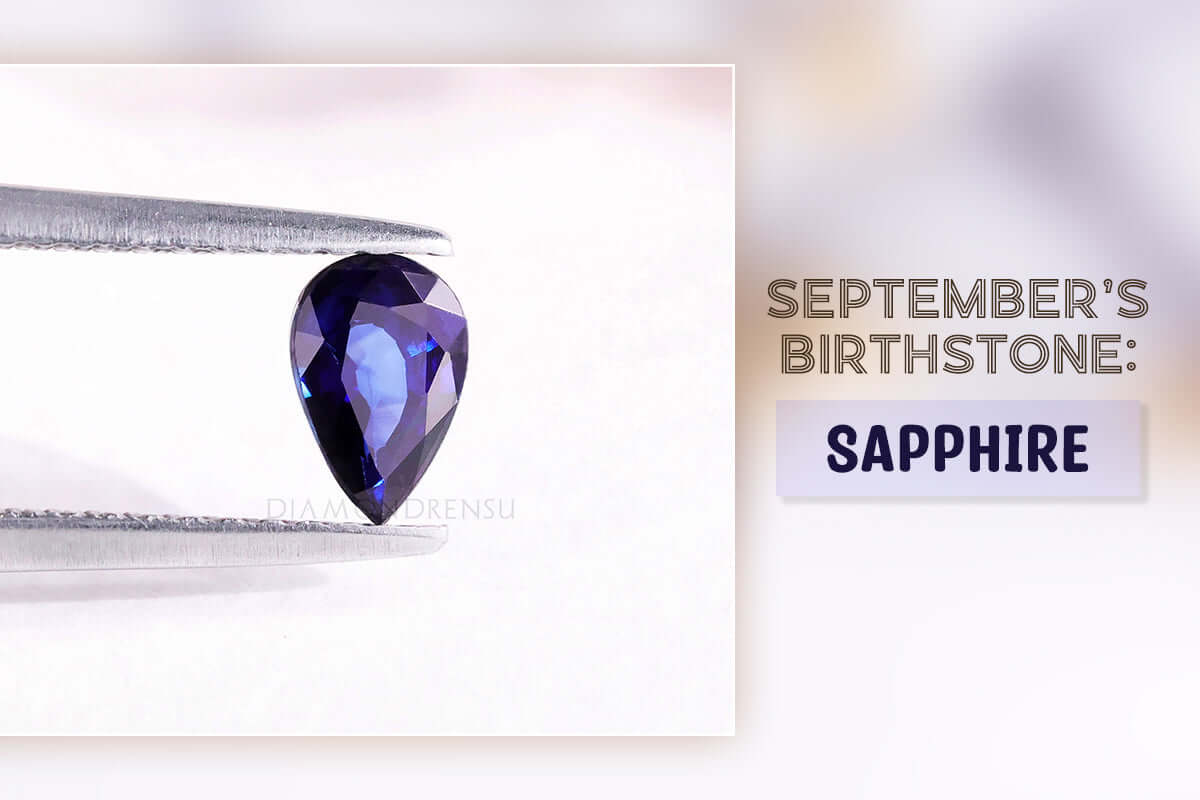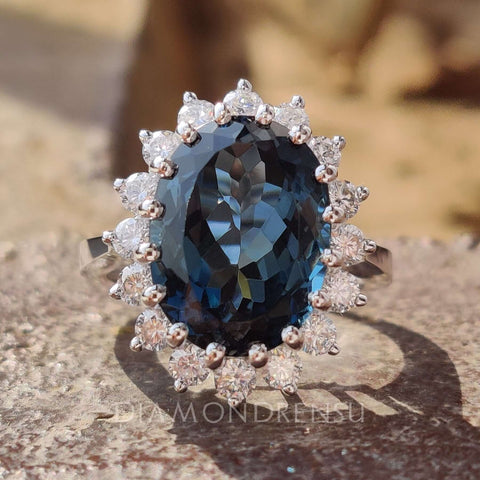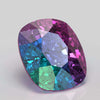A birthstone is a gemstone that represents the month of your birth. These stones have historical significance and are often believed to carry certain qualities or meanings. Birthstones can be precious gems like diamonds and rubies or semiprecious stones such as opals and garnets. Each month is associated with a specific stone, offering a personalized touch to jewelry that many people cherish.
You might choose to wear your birthstone as a symbol of pride in your birth month or because you feel a connection to the qualities it is thought to represent. This tradition has roots that go back to ancient times when it was believed that gemstones had the power to protect and heal. Today, birthstones are a popular gift for birthdays, anniversaries, and other milestones, adding a layer of significance to the act of giving.
Understanding your birthstone is simple: each month corresponds to a specific stone with its unique color and history. For example, January is represented by the rich red garnet, while September’s birthstone is the deep blue sapphire. Whether integrated into rings, necklaces, bracelets, or other forms of jewelry, birthstones offer a way to celebrate your individuality and bring a personal significance to your accessory choices.
The Concept of Birthstones
Birthstones are a unique collection of precious and semi-precious stones that are traditionally associated with each month of the year. Each stone represents various virtues such as protection, love, wisdom, and strength, offering more than mere adornments for your jewelry.
Historical Significance
In ancient times, the idea of birthstones was deeply interwoven with astrology and the belief in the therapeutic benefits of gemstones, which dates back to the breastplate of Aaron, described in the Book of Exodus. The breastplate contained twelve gemstones representing the twelve tribes of Israel. This concept was later connected by Josephus and St. Jerome to the twelve zodiac signs and their corresponding stones. It's posited that wearing a gemstone during its associated month amplified its beneficial effects.
- Ancient Connection: Each gem represented a tribe and later a zodiac sign.
- Protective Qualities: Gems were believed to offer protection to the wearer.
- Josephus and St. Jerome: Linked the stones to the zodiac.
Modern Interpretations
In your current practices, birthstones carry symbolic meanings and personal significance. Rings and other pieces of jewelry often feature a birthstone to denote the wearer's birth month, or to represent loved ones in a gesture of love and unity. The National Association of Jewelers of America officially adopted a standardized list of birthstones in 1912 which brought uniformity to the tradition. These stones now represent a universal language of self-expression and personal wisdom.
- Personal Significance: Stones signify birth months and personal connections.
- Standardized List: Adopted by jewelers for consistency.
- Universal Language: Birthstones express individuality and personal virtues.
Your choice of a birthstone, whether set into a ring, a necklace, or a bracelet, connects you to a legacy that spans millennia. The stones imbue a sense of strength and history that continues to evolve with modern interpretations.
Birthstone Types by Month
| Month | Birthstone |
|---|---|
| January | Garnet |
| February | Amethyst |
| March | Aquamarine |
| April | Diamond |
| May | Emerald |
| June | Pearl |
| July | Ruby |
| August | Peridot |
| September | Sapphire |
| October | Opal |
| November | Topaz |
| December | Turquoise |
Each month is traditionally associated with one or more gemstones known as birthstones. These stones are thought to hold significance and bring good luck to those born in their respective month. Below is a guide to help you identify your birthstone by the month you were born.
January: Garnet

In January, your birthstone is the Garnet, known for its rich red color. It is a symbol of trust and friendship.
February: Amethyst

If you were born in February, the purple-toned Amethyst is your birthstone, representing clarity and courage.
March: Aquamarine and Bloodstone

March celebrates two birthstones. The serene blue-green Aquamarine reflects the soothing spirit of the ocean, and the Bloodstone, a unique green stone with red speckles, is known for its grounding properties.
April: Diamond

Recognized as the pinnacle of luxury, the Diamond is April's birthstone, acclaimed for its unmatched strength and brilliance.
May: Emerald

If you're a May baby, the Emerald, with its lush green hue, represents rebirth and love.
June: Pearl and Alexandrite

Those born in June have the elegant Pearl, symbolizing purity, and the enchanting Alexandrite, which changes color from green to red, reflecting the duality of those born this month.
July: Ruby

The radiant red Ruby, the birthstone of July, is prized for its intense color and represents passion and energy.
August: Peridot and Spinel

For August birthdays, the vivid green Peridot and the multi-colored Spinel offer a spectrum of colors ranging from lime to deep pink.
September: Sapphire

September's birthstone, the Sapphire, comes typically in a deep blue, symbolizing wisdom and nobility.
October: Opal and Tourmaline

October claims the Opal and Tourmaline, gemstones celebrated for displaying a rainbow of colors and a captivating play-of-color.
November: Topaz and Citrine

November's birthstones are the warm yellow to orange Topaz and Citrine, known to bring cheer and success to those who wear them.
December: Turquoise, Zircon, and Tanzanite

Finally, December boasts three birthstones; the timeless Turquoise, the brilliant Zircon, and the exquisite violet-blue Tanzanite —a trio of hues perfect for closing the year.
Gemstone Properties
When exploring gemstones, you'll discover a fascinating world of colors and qualities that are believed to have various effects on health and well-being, each with its distinct historical and cultural significance.
Color Variations
The palette of gemstone colors is virtually endless, with each hue bringing its unique appeal. For example, the quartz family alone displays a broad spectrum, from pink to colorless. The deep red of garnet exudes warmth, while blue sapphires are cherished for their calming presence. Green gemstones, like emeralds, have long been associated with royalty, and purple amethysts are linked to wisdom. Other stones, such as citrine, showcase a vibrant yellow or orange, capturing the essence of passion and energy.
Healing and Health
Many cultures ascribe healing properties to gemstones, believing they can promote health and well-being. For instance, crystal pendants are often worn to heal emotional wounds or to bring strength and protection to the wearer. Bloodstone, often used as an ayurvedic birthstone, is valued for its purported ability to purify the blood and fortify the immune system.
Cultural and Emotional Associations
Throughout history, gemstones have been imbued with significant cultural and emotional associations. Black stones like onyx are often symbols of protection, while colorless diamonds represent purity and unbreakable bonds. Gemstones can remind you of feelings such as love or offer a sense of strength during trying times. Many gemstones also have a connection to astrology, with certain stones linked to Zodiac signs or serving as birthstones for particular months.
Choosing and Caring for Birthstones

When selecting your birthstone jewelry, such as rings, necklaces, or earrings, it's important to consider both aesthetic preferences and practical care requirements. Whether for an engagement piece or a personal treat, the following guidance will help ensure your choice remains a lasting treasure.
Selection Criteria
Color and Light: Each gemstone has a unique color profile, and the right choice often depends on personal preference. For birthstones, assess the intensity and hue that appeal to you, keeping in mind that the color should complement both your skin tone and the gold or silver setting of the jewelry piece.
- Clarity: The clarity of a gemstone impacts its sparkle and overall beauty. Look for stones with minimal inclusions, though some, like emeralds, naturally have more. A clear stone is synonymous with higher quality in jewelry, particularly in engagement rings.
Care and Protect: Regular maintenance is crucial to protect your investment. Soft gemstones require more gentle handling, while harder stones, like diamonds, can withstand regular wear. Store your jewelry in a soft cloth away from light to maintain its luster.
Maintenance and Preservation
Daily Care: To maintain the brilliance of your birthstone jewelry:
- Avoid exposure to harsh chemicals found in cleaning products and cosmetics.
- Remove jewelry before engaging in physical activities to prevent scratches or damage.
Regular Cleanings: Keep your birthstone looking its best with routine cleanings. For most gemstones, a solution of warm water and mild soap, paired with a soft-bristle brush, is adequate for cleaning. Pat dry with a lint-free cloth after washing.
Ensure your favorites, be it a birthstone ring or necklace, retain their beauty and functionality over time through thoughtful selection and diligent care.
Frequently Asked Questions
Navigating the lore and facts about birthstones can be intriguing. This section aims to succinctly address common queries about these gemstones tied to birth months.
How are birthstones assigned to each month?
Birthstones are traditionally linked to each month based on historical and cultural significance. Gemstones were ascribed to months dating back to ancient civilizations, and over time, these associations were formalized by jewelers and societies.
What are the historical significances of birthstones?
Historically, birthstones are thought to carry significant meanings and properties. Many believe that wearing a gemstone associated with one's birth month can bring luck, protection, or therapeutic benefits. For instance, wearing pearls, the birthstone for June, has been traditionally thought to symbolize purity and innocence.
Can you provide a list of birthstones by month?
Certainly. The list of traditional birthstones typically includes garnet for January, amethyst for February, aquamarine for March, diamond for April, emerald for May, pearl for June, ruby for July, peridot for August, sapphire for September, opal for October, topaz for November, and turquoise for December.
What is the distinction between gemstones and birthstones?
All birthstones are gemstones, but not all gemstones are considered birthstones. Gemstones are minerals, rocks, or organic materials that are valued for their beauty and rarity, while birthstones are specifically selected gemstones associated with certain months of the year.
How might one's birthstone impact their life according to tradition?
In tradition, each birthstone is believed to impart different benefits. For example, amethyst is said to promote clarity and calmness for those born in February, while rubies are thought to instill courage in individuals born in July.
Are there any alternative birthstones associated with each month?
Yes, some months have alternative birthstones that vary depending on the source or cultural origin. An example is June, which traditionally has the pearl as a birthstone but also recognizes moonstone and alexandrite as alternatives.
Checkout some of our top collections:











